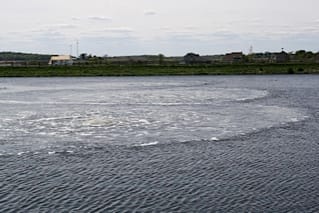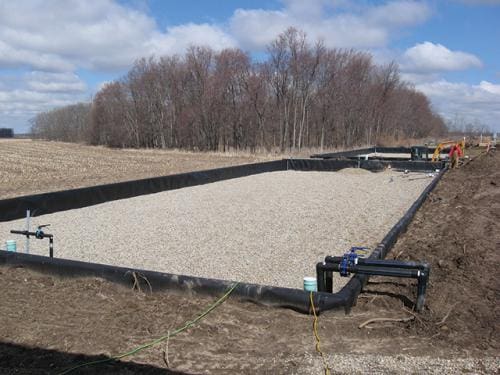Evaluating 4 Lagoon Ammonia Treatment Solutions
Lagoon Ammonia Treatment seems to be constantly topping the agenda of wastewater lagoons these days. This is primarily due to new lagoon ammonia and, in some cases, nitrogen limits that are being placed on wastewater lagoons. The lagoon nitrification process is the most common form of biological lagoon ammonia/nitrogen removal. To build on our article from last week, 6 Tips to Remove Ammonia from Wastewater Lagoons, in this article we evaluate several different lagoon ammonia/nitrogen removal solutions in order to help you understand what the options are.
- Upgrade your Lagoon Aeration System—Lagoon nitrification requires 4.6 lb/O2 per pound of ammonia as compared 1.5 lb for BOD removal. As a result, given that lagoon ammonia-nitrogen limits are relatively new, it is likely that your lagoon aeration equipment was simply not designed to provide enough oxygen for lagoon ammonia removal to occur. Moreover, many wastewater lagoon facilities have old, worn down, and outdated lagoon aeration equipment. This could mean that aeration systems aren’t functioning properly and struggling to provide even enough oxygen and mixing for BOD removal, let alone lagoon ammonia treatment. Lack of properly sized or functioning equipment could result in myriad problems for the wastewater lagoon. For example, broken laterals on a diffused aeration system, or surface aerators that require frequent maintenance, could result in dissolved oxygen (DO) levels that are too low to properly treat ammonia. Certainly, by upgrading their currently antiquated lagoon aeration system, operators can enjoy lower Operation & Maintenance costs while also providing the oxygen necessary for lagoon ammonia treatment. Assessment: Simplest and least intensive solution in terms of capital. In addition, an upgraded system often results in increased lagoon aeration efficiency and improved operation and maintenance cost.
By storing and aerating lagoon effluent over the colder winter months ammonia can be removed prior to discharge. Winter Storage—In rural areas where land is often available, an aerated effluent storage lagoon can be built. This allows your effluent to be stored and aerated over the cold winter months when the nitrification process slows greatly (or sometimes stops entirely). When the weather warms in the spring, and lagoon ammonia levels begin to drop, you can empty the effluent and be sure to meet regulations.
Assessment: This is an attractive option for municipalities seeking to decrease ammonia levels while keeping Operation & Maintenance costs relatively low.
- Lagoon Covers & Polishing Reactor—Wastewater lagoon covers are designed to retain heat by insulating the surface of lagoons. A lagoon cover can be successfully implemented to keep the water warm enough to achieve nitrification (lagoon ammonia treatment) in the winter and year round. However, you must be certain that there is a strong enough aeration system to keep DO levels and mixing high enough to treat BOD, and thus allow for nitrification. A polishing reactor is utilized as a final step to the process at the end of the treatment cycle. The reactor uses UV-resistant PVC media and a complete-mix environment to promote growth of denitrifying bacteria. This allows the system to control both BOD and ammonia, despite cold weather. Assessment: A very effective option, but lagoon covers along with the aeration and mixing equipment necessary can have a high capital cost.
- Aerated Rock Filter—A submerged aerated rock filter is typically added as an effluent polishing measure. Effluent flows through gravel media that collects a nitrifier mass over time, making lagoon nitrification (ammonia treatment) more efficient. The aeration aspect of this system assures that the necessary oxygen levels
Aerated Rock Filters have proven to be an effective method of lagoon ammonia removal despite cold water temperatures. are met for nitrification. The system is generally placed in the ground and covered in a layer of insulating mulch.
Assessment: Has been proven as a successful solution. Land requirements can be significant. Aeration and mixing equipment brings with it increased operation and maintenance costs.
Cost-Effective Lagoon Ammonia Removal

Lagoon ammonia removal via nitrification can be achieved without scrapping your current treatment system. The NitrOx® System was designed to be incorporated into an existing system for the sole purpose of ammonia removal, helping to keep capital costs low—at 2/3 the cost of existing nitrification options—and minimize the financial burden of plant upgrades. NitrOx, through controlled thermal regulation, biomass, mixing, and aeration, optimizes conditions for nitrification, even in cold weather.
Download the NitrOx Technical Information for more information on cost-effective Lagoon Ammonia Removal.



